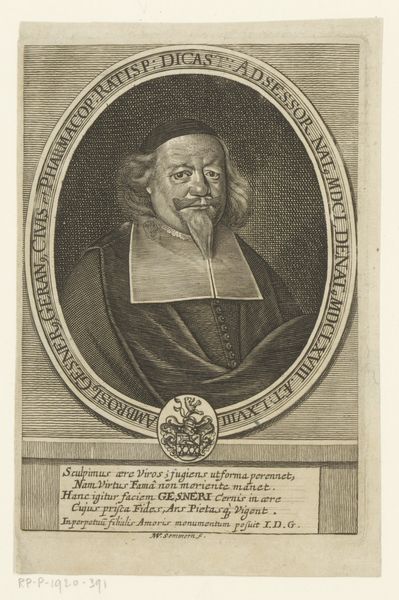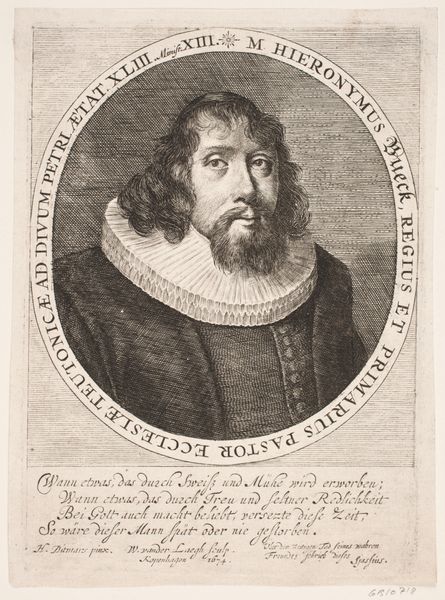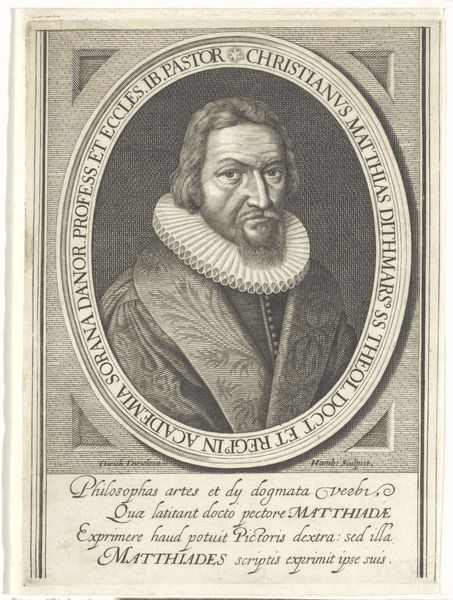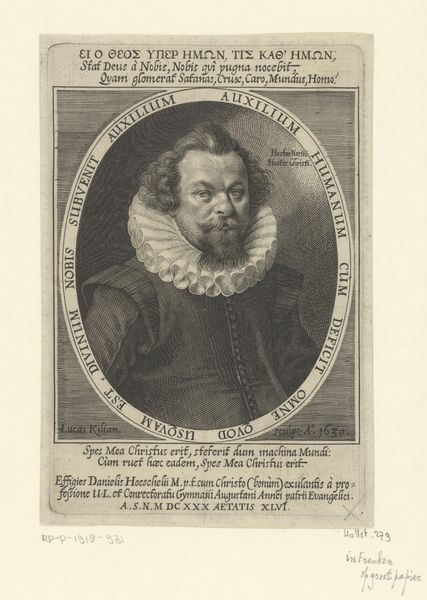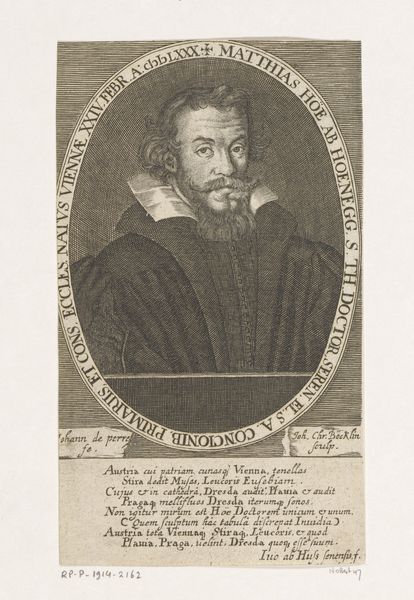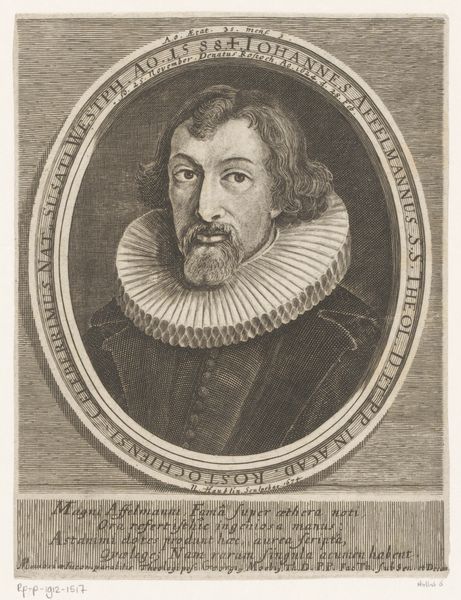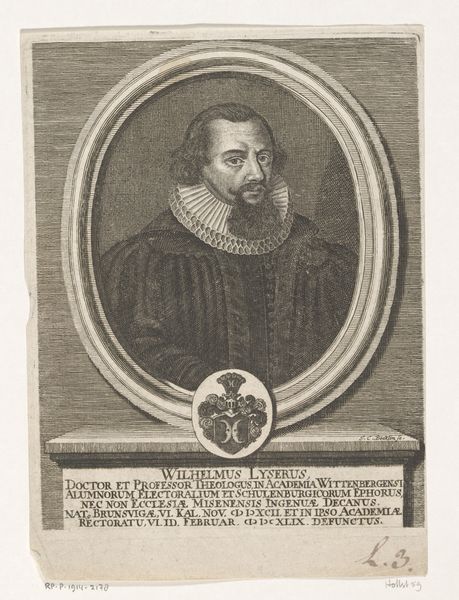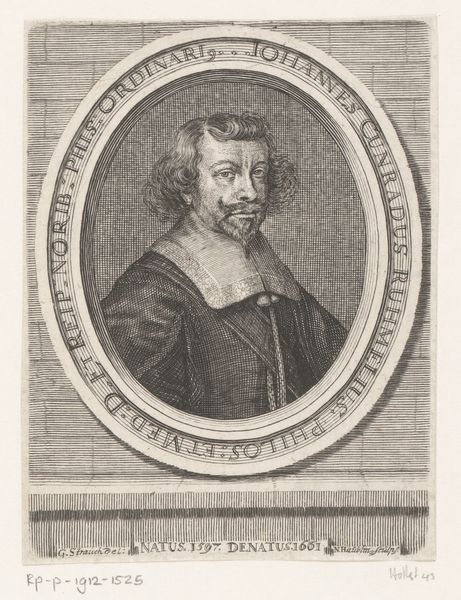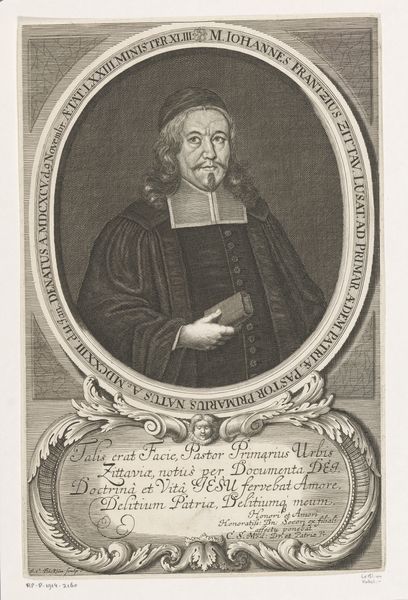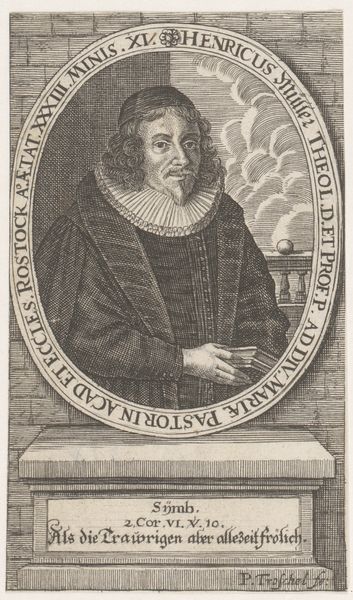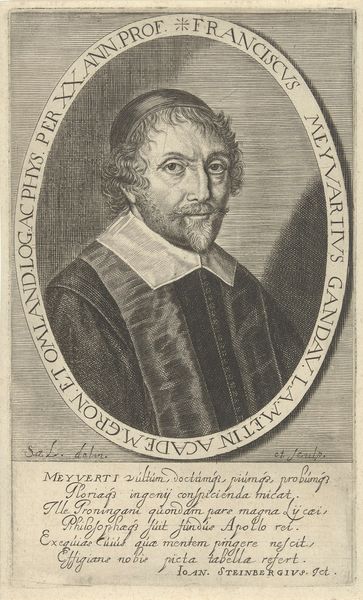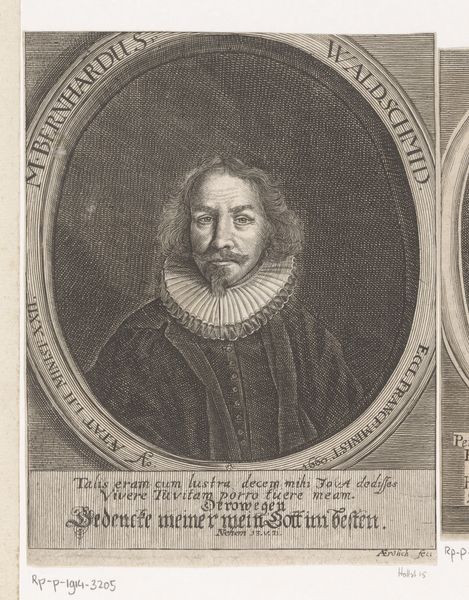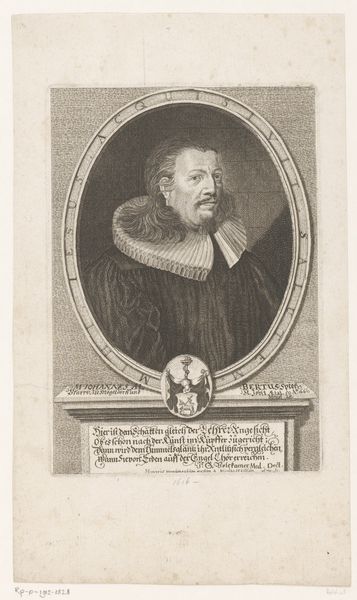
drawing, print, metal, engraving
#
portrait
#
drawing
#
baroque
# print
#
metal
#
old engraving style
#
historical photography
#
portrait reference
#
history-painting
#
engraving
Dimensions: height 184 mm, width 139 mm
Copyright: Rijks Museum: Open Domain
Curator: Let's discuss this engraved portrait, identified as "Portret van Tobias Magirus." It seems to date from around 1665 to 1721, placing it squarely within the Baroque period. What strikes you immediately? Editor: The detail. The intricate hatching gives the subject, this Tobias Magirus, a real weight. It’s impressive how the engraver managed to create that sense of depth and volume, despite the limitations of the medium. A feeling of sobriety emanates from his gaze. Curator: Absolutely. And understanding Magirus is key here. He was a professor of theology and Hebrew, a significant public intellectual in Frankfurt during the 17th century. Portraits like these served a vital function, circulating his image and ideas within scholarly circles and beyond. They project not only personal identity but professional status. Editor: Yes, notice the inscription framing the oval of the portrait; its semiotic weight reinforces his identity. It’s not just a likeness; it's a carefully constructed image. How do you think this portrait would have functioned in its time, circulating amongst the political or religious public? Curator: Precisely. Engravings allowed for mass production and distribution. Think of this portrait as a kind of visual calling card or perhaps even an early form of propaganda. They solidified Magirus's reputation but also presented him in a carefully curated light – a pious, learned man serving the interests of church and state. His dark, austere robe would denote dignity, authority. Editor: A stage presence, perfectly encapsulated. But observe how the face emerges out of this gloom of clothing. See how the tight curls are mirrored in the looping script. Note too that small floral decoration beside his date of death; this intimate detail humanises the somewhat imposing figure. Curator: Those nuances are crucial, because these portraits became tools to bolster the power and influence of institutions, and of the powerful people, like Magirus, attached to them. The Baroque excelled at combining dramatic impact with ideological messaging. Editor: Well, it’s definitely given me something to consider. The image seems so fixed and austere, but it hints at something less readily codified. Curator: And, for me, understanding how the artwork circulated through early academic networks shows how powerful images played a role in shaping the world.
Comments
No comments
Be the first to comment and join the conversation on the ultimate creative platform.
